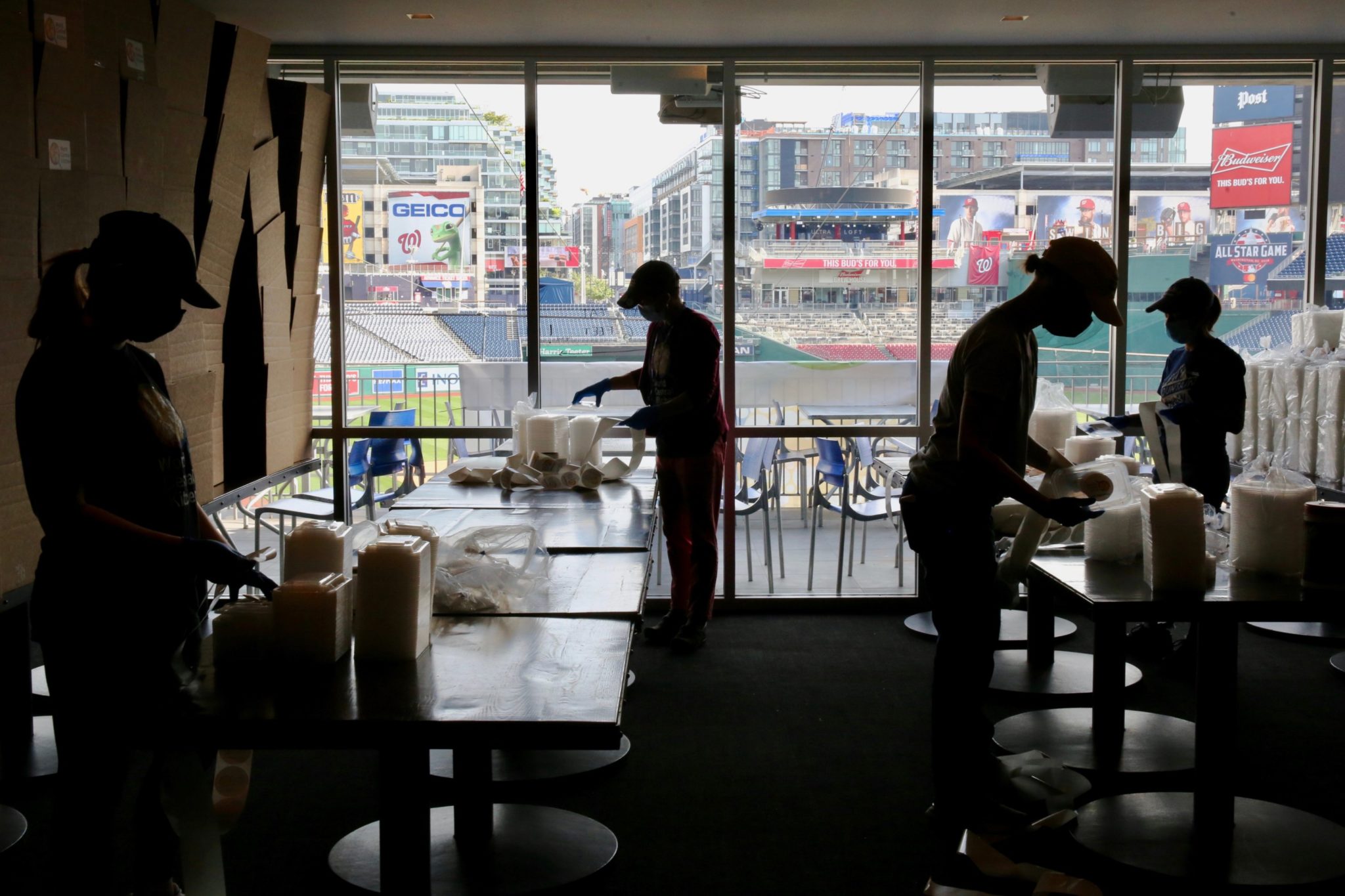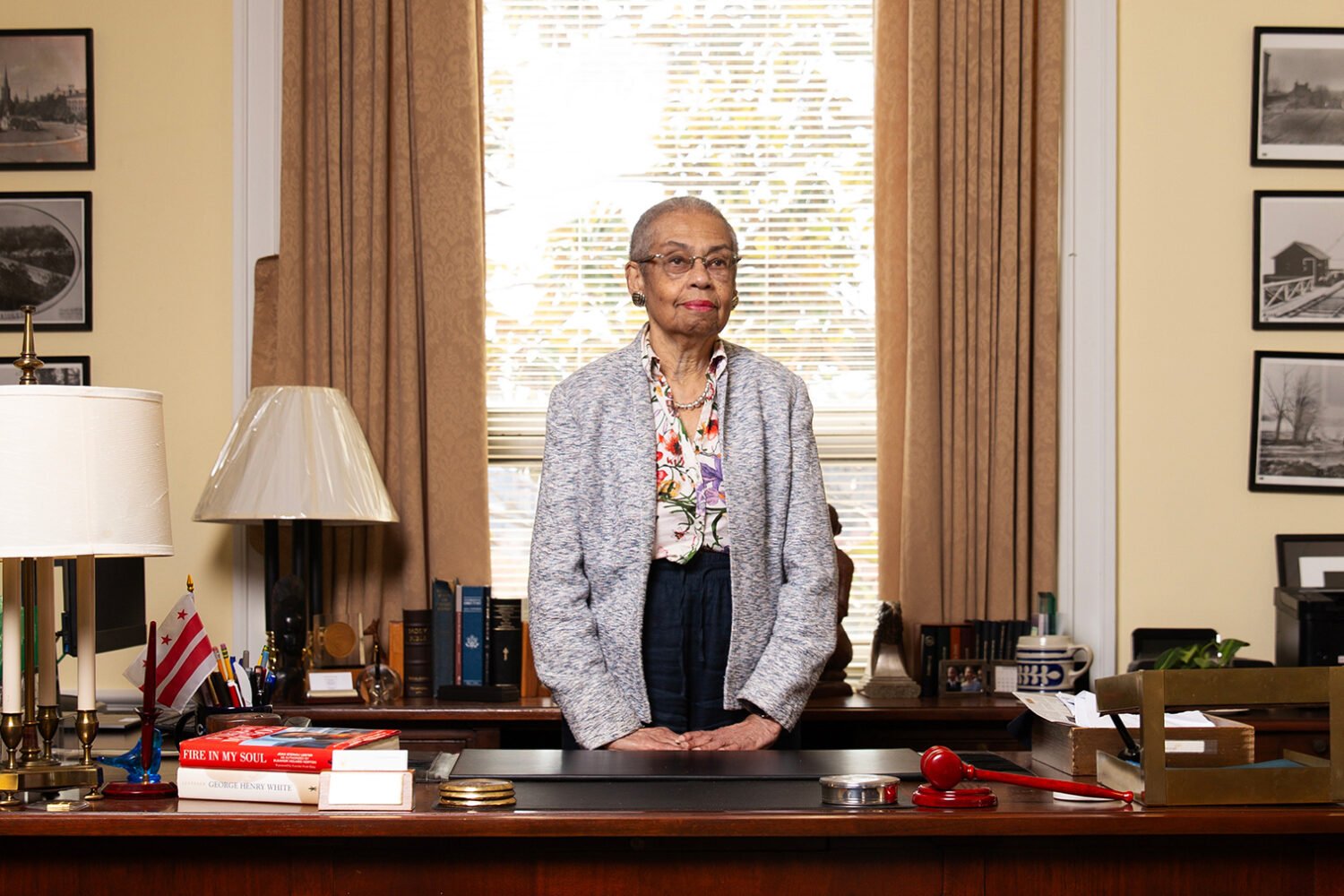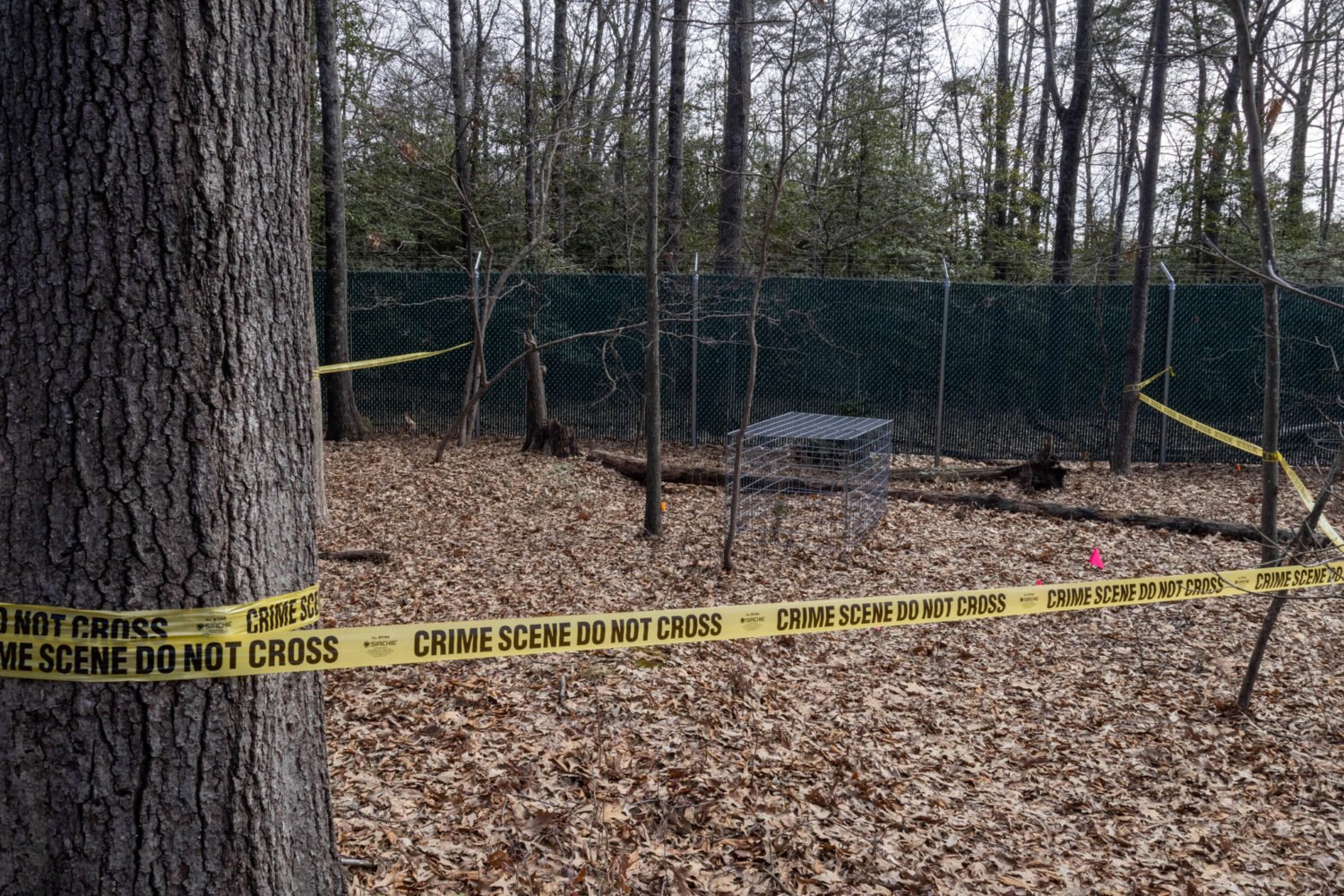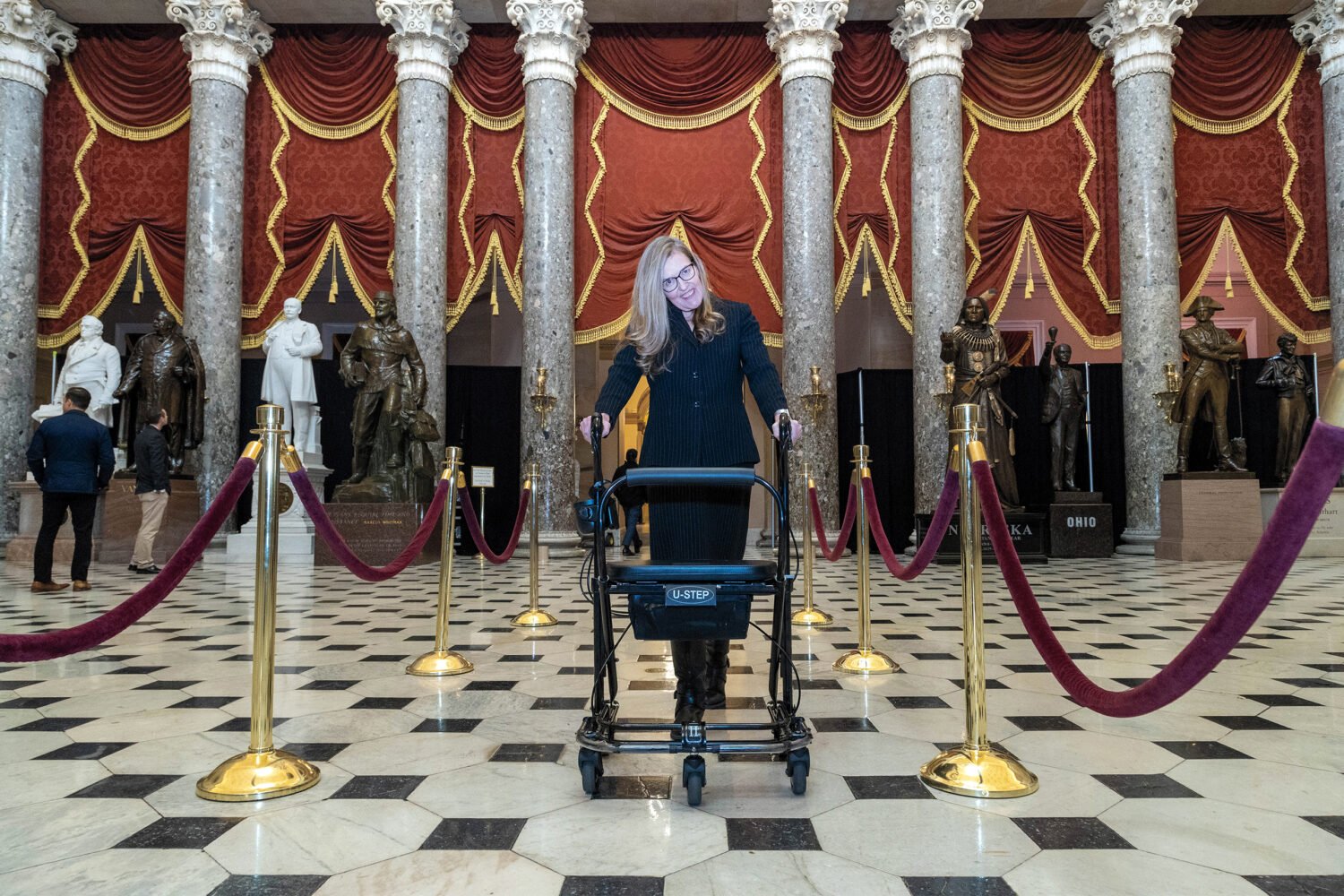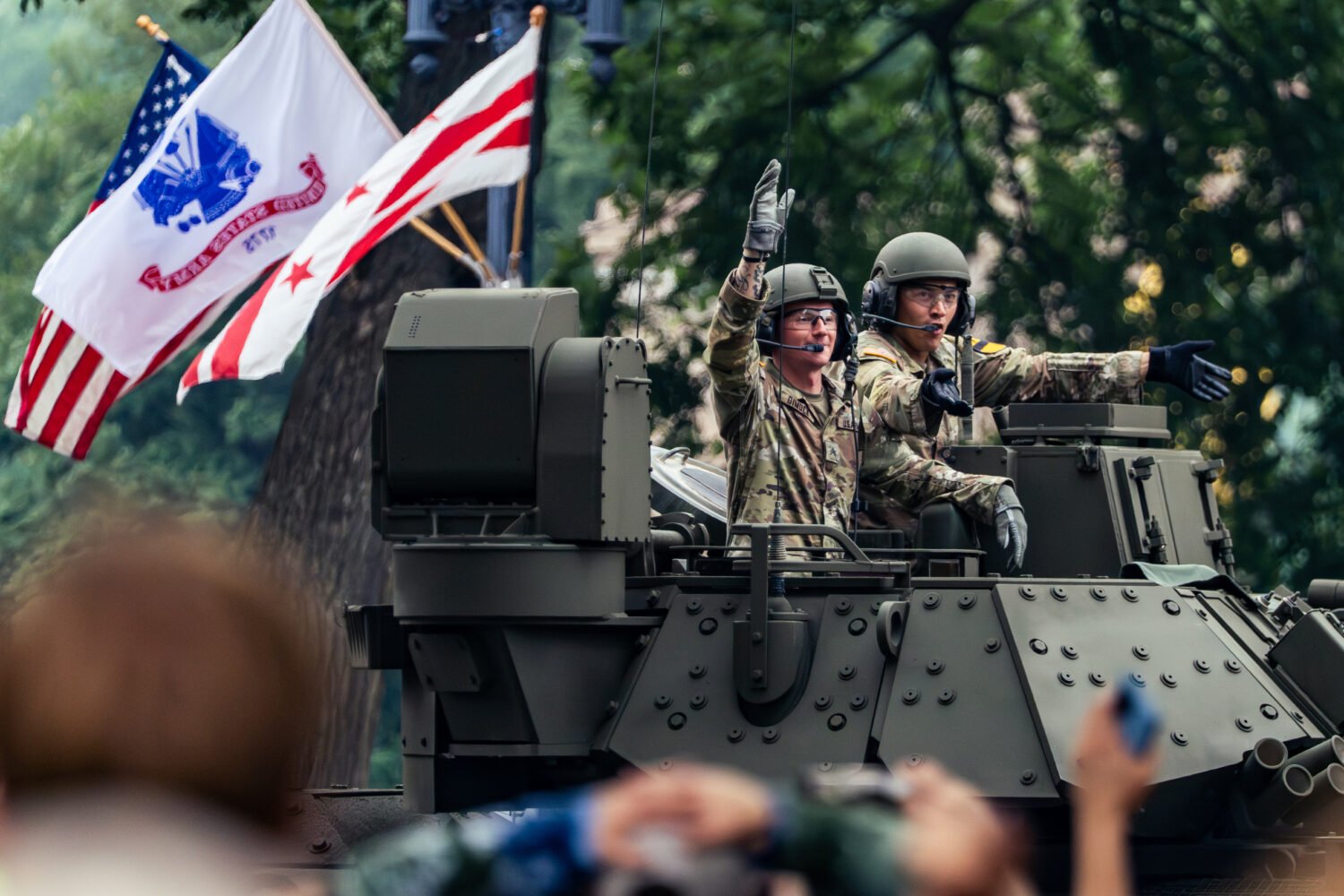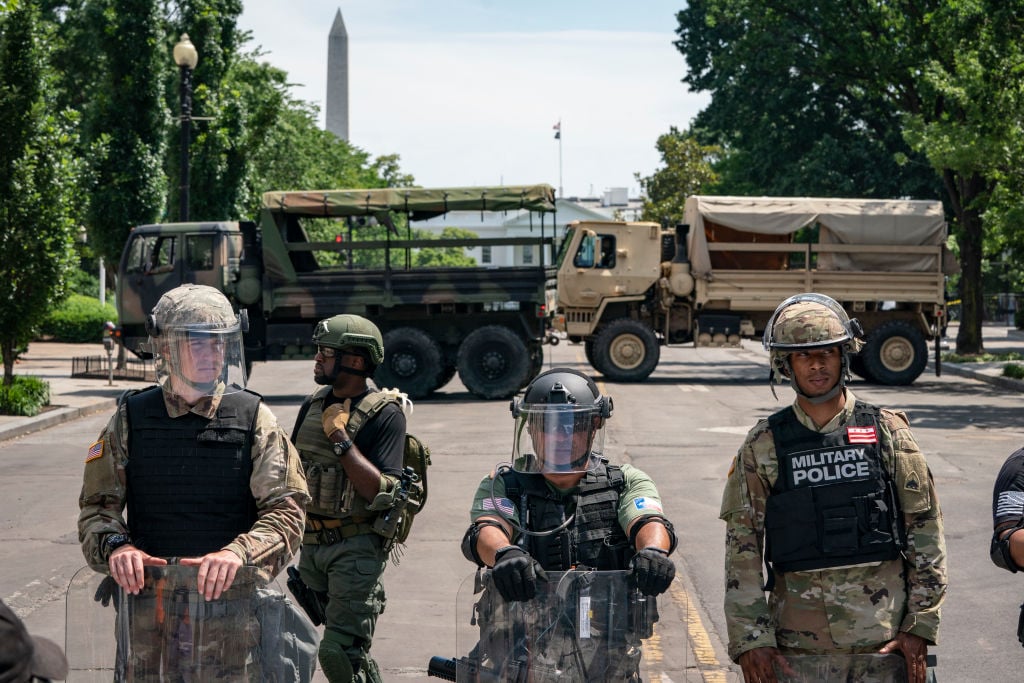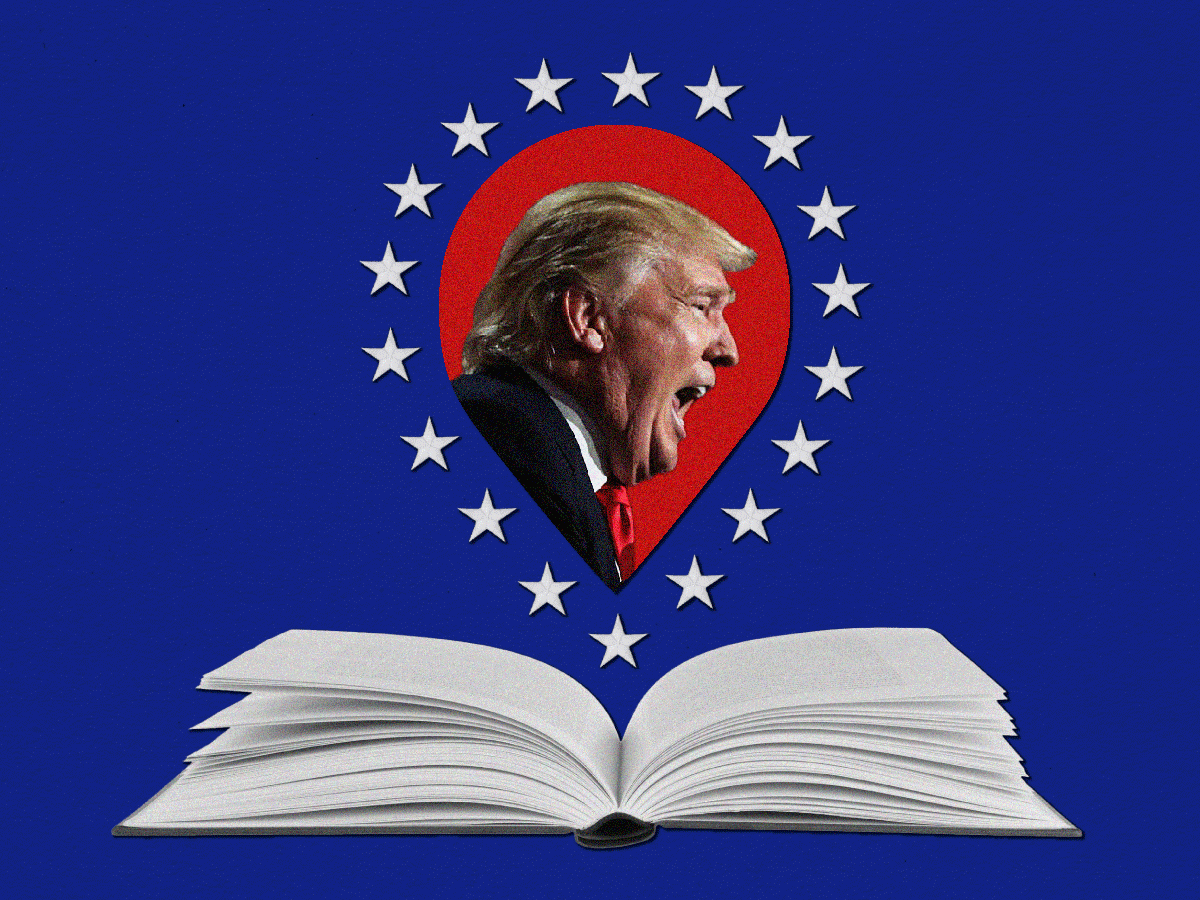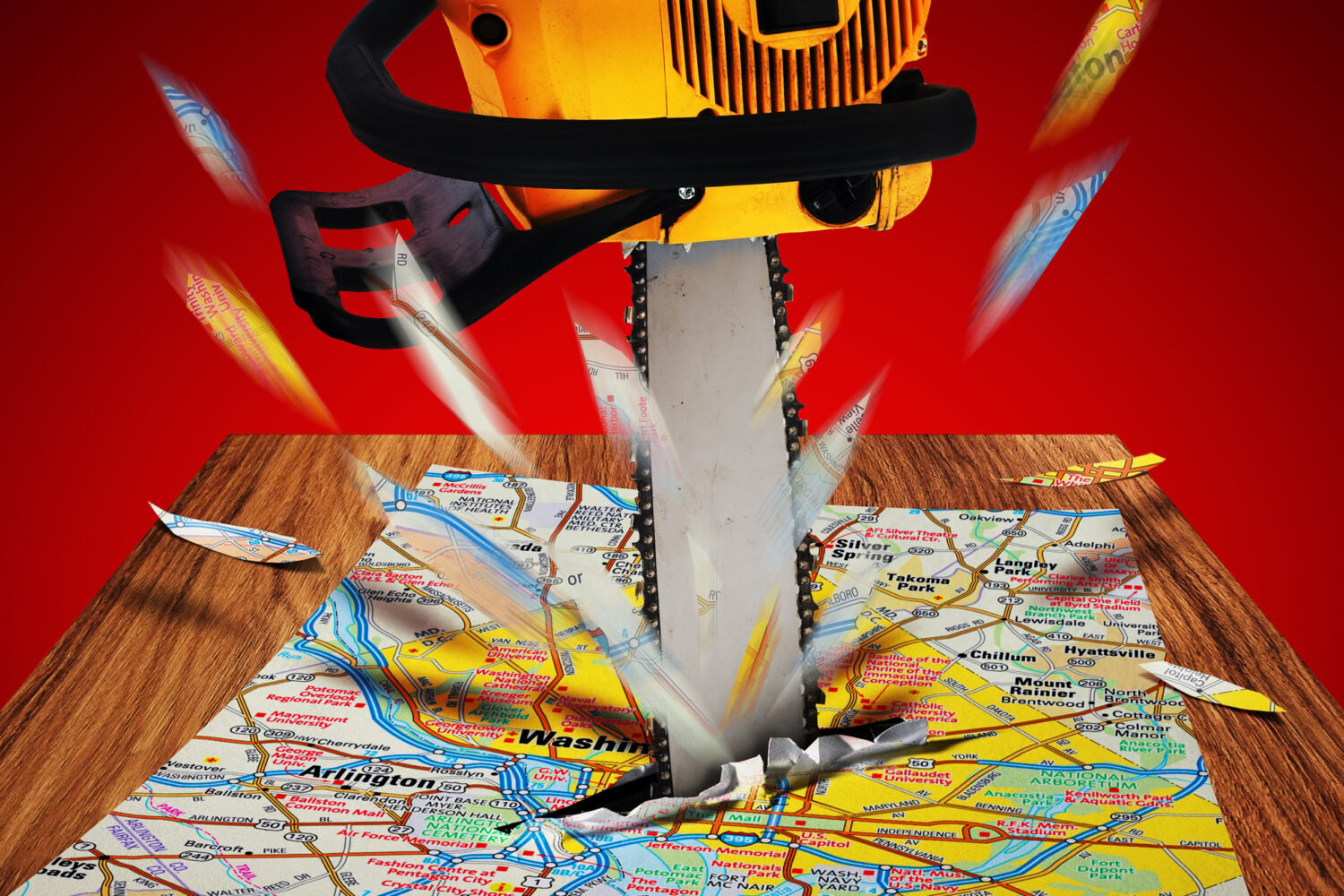Around 7:00 am, the first of the crew begins shuffling into Nationals Park. By 7:30, about 30 cooks have arrived. By 8, kitchens across the stadium are buzzing and clanging as the cooks thrash broccoli, dice onions, and row their way through Titanic-size skillets of tender beef.
At 8:30, the first volunteers show up in the Diamond Club behind home plate, or the Brewhouse in the outfield, where Nats fans used to nosh on pan-seared salmon and inhale tallboys. At 8:50, there’s the “pre-shift.” A crowd of 60 or so gather and receive their marching orders for the day—in this case, 12,000 meals—and also learn what they’ll be packing. Yesterday, pasta primavera. Today, beef fajitas.
Outside the bleachers on this Wednesday before Memorial Day, life in the capital is frozen, ten weeks and counting into a global pandemic and the city’s quarantine. But inside this hidden citadel, two frenzied conga lines are packing takeout containers, hauling giant pallets off to the right-field gate, and dispatching boxes of food at no less than 150 degrees—typically into a van that belongs to a church liaison, or a cop, or a Maryland lawmaker.
“We’re an ounce heavy, guys—bring it down a little, please!” calls Matt Adler, one of the site’s two directors. He’s peering down at a scale that holds a meal, frowning.
On and on this goes, for six straight hours, as the workers at World Central Kitchen’s largest food-relief operation in the country churn out 2,000 meals an hour. “Nobody knows what these people do every day,” says Adler, “just to get the food out.”
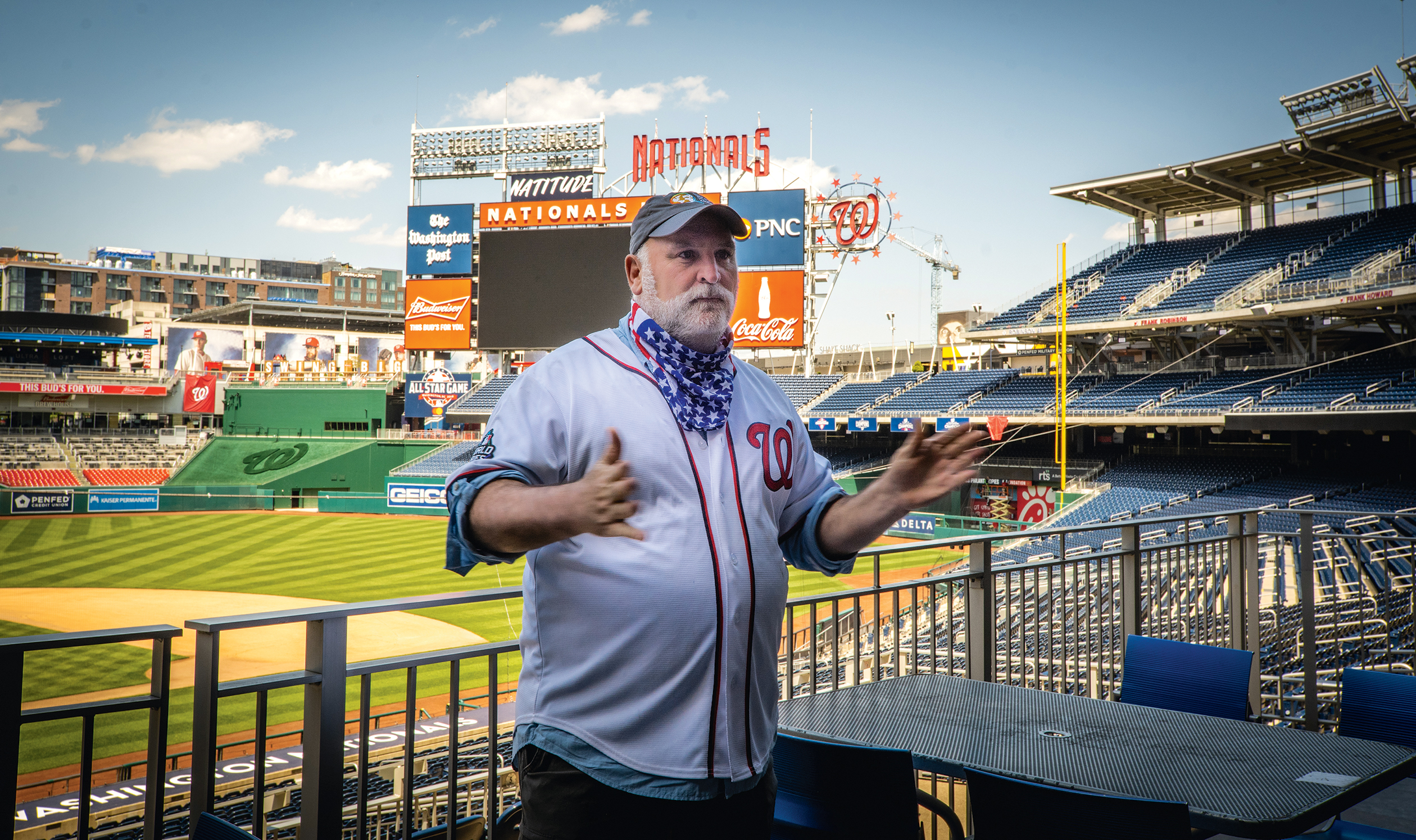
José Andrés founded World Central Kitchen in 2010, when he was still best known as the elite chef behind some of Washington’s priciest meals. Then Hurricane Maria struck in 2017. Andrés, at that time already a loud-mouthed foil to President Trump, transformed into the nation’s humanitarian in chief. During the past two years, every time a hurricane made landfall or forest fire broke out, it seemed only a matter of hours before Andrés was tweeting his way to ground zero in his Orvis fishing vest. In a dizzyingly short period, he went from hometown do-gooder to, as Time recently trumpeted, “the face of global disaster relief.”
And that was just at the opening act of the pandemic, when the virus gave way to a second plague: hunger. The crisis has decimated American food banks, where unprecedented demand has dwarfed a dwindling supply. In San Antonio, thousands of cars descended on a local outpost; the country’s largest network of food banks is projecting a $1.4-billion shortfall this year. At the same time, the virus’s economic tsunami has hit one industry especially hard: restaurants.
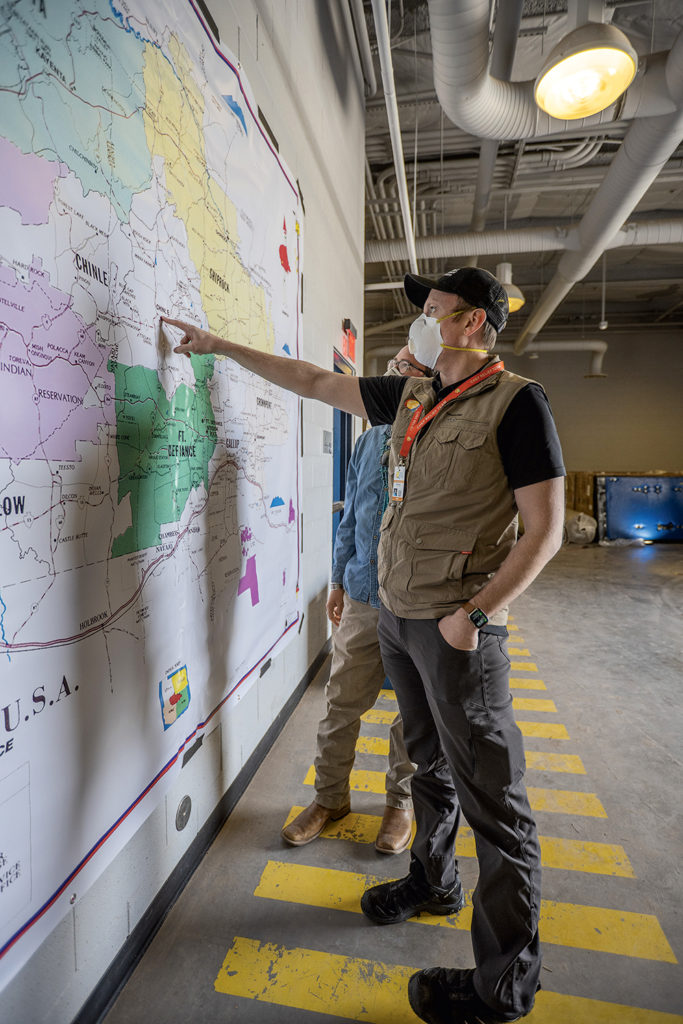
It was an altogether different form of natural disaster, but World Central Kitchen was uniquely positioned to step in. Its model is built on hot food cooked by chefs. Instead of punching their card at DBGB or St. Anselm, dozens of out-of-work dining personnel are now reporting to Nats Park and other relief sites, feeding the hungry and receiving a stipend for their efforts. The nonprofit has also gone further—directly paying thousands of US restaurants to make their own relief meals for their communities, helping keep their doors open in the bargain.
Altogether, World Central Kitchen now dishes out a quarter million fresh meals daily in 34 states. Since the outbreak began, the group has fed 15 million people around the world. By the time you read this, the number will likely have surpassed 16 million. The organization raised almost $29 million last year—a roughly 200-percent increase from 2018. This quarter alone, it’s on track to raise more money than its entire 2019 budget.
These are Babe Ruth numbers, startling enough that Capitol Hill is now considering legislation that would instruct FEMA to follow World Central’s example. And yet the team is scrappy—tiny in number, short on expertise. “We’re not the Red Cross, with 20,000 employees,” says Nate Mook, World Central’s CEO. “It’s kind of ludicrous, unless you realize it’s all in the approach we take.”
Like many, what I was eager to know was: How were they doing it?
When Maria hit Puerto Rico, World Central Kitchen had three full-time employees. Mook was not one of them. But when Andrés’s plane took off for San Juan five days later, Mook was onboard, having joined his friend Andrés on a whim. “There was no agenda,” Mook says. “I think I brought, like, three pairs of underwear.”
At 38, Mook is reedy, with sharp, birdish features, boyish brown hair, and the aspect of someone permanently young. He was born in DC but made his money out west, launching several tech companies. He later fell in with the TED Talk crowd, managing TEDxMidAtlantic before a turn as a documentary filmmaker. Perhaps unsurprisingly, the celebrity chef and his tech-maven sidekick were received coolly by more established aid groups in Puerto Rico. “Folks at FEMA, the Red Cross, the Salvation Army—these organizations, they were laughing José and me out of the room,” says Mook. “Like, ‘What do you guys know about feeding people in disasters?’ ”
Technically, nothing. But they went about it anyway, frantically rousing a network of local chefs, kitchen owners, and food-truck drivers; locating hot spots; recruiting volunteers. All told, 20,000 people stepped up to distribute 3.7 million meals. No other aid group even approached such volume—much less the quality, with made-from-scratch meals crafted by Andrés and his culinary battalion. By the end, the Salvation Army had gotten some of its food from World Central. FEMA itself subsidized a few weeks’ worth.
“How do we make sure we don’t become what we’re afraid of in other organizations?”
The effort, World Central’s supporters say, wasn’t just a feel-good achievement but a genuine innovation. In disaster zones, the traditional food-aid salvo is military MREs—meals ready to eat, which have high caloric density but remain about as appetizing as what you’d expect for something with a shelf life of forever. They typically arrive with the army of aid workers bringing essential items, in accordance with a well-documented plan. Instead, Andrés parachuted into the island with no plan whatsoever. In the panorama of rubble, he saw a trained workforce eager to spring into action in their own communities.
“We realized you start small,” says Mook. “We were looking at the problem with fresh eyes.”
After Maria, things got interesting. Andrés deputized Mook to replicate the model. Over the next year, Mook hopscotched across disaster zones, collecting a retinue of confidants and fellow travelers along the way. They first served as volunteers, then as contractors. The team looked a lot like Mook, who until January 2019 was the only full-time salaried employee: white-collar professionals, with no background in humanitarian work but an instant attraction to a relief mission.
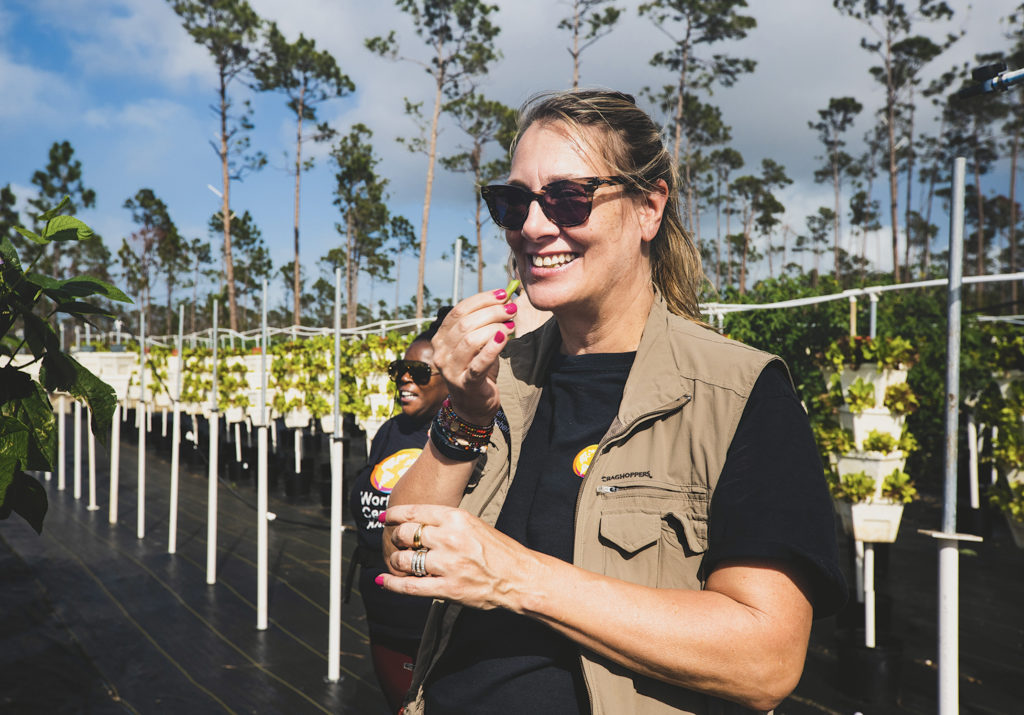
One of them was Tim Kilcoyne, now the 42-year-old head of chef operations, who joined up after the 2017 Thomas Fire in California. He’d once worked at the Playboy Mansion, where he paired $5,000 wines for the Hollywood elite and served room service to the occasional Bunny. By the time of the fires, he owned a restaurant and a fleet of food trucks in Ventura. Kilcoyne’s buddy from the cooking world, 44-year-old Jason Collis, is now chief of procurement—the guy who has to find a crane or refrigerated truck, with a deadline of yesterday. In a former life, Collis ran a credit-card-processing business. Josh Phelps, the 41-year-old director of relief operations and a longtime DC resident, spent 15 years as a traveling auditor for the pharmaceutical industry, carrying clipboards to cancer-drug trials. He responded to a World Central call for help in Antigua in 2018, and that was pretty much that.
The year 2019 brought a torrent of disasters—a tornado in Missouri, a cyclone in Mozambique, an earthquake in Albania, a tropical storm in Louisiana, and Hurricane Dorian, the worst ever to slam into the Bahamas. The team learned as they went, a series of trial runs just as a global menace was brewing in a wet market in Wuhan, China. “It’s kind of been building, nonstop, up to this,” Phelps says.
As the world woke up to coronavirus, Mook’s team rushed to Yokohama, Japan, to feed the trapped inhabitants of the Diamond Princess cruise ship. That meant quickly assessing a bizarre portfolio of obstacles: how to hoist thousands of pounds onto a ship that no supplies could ever leave, and that no one wanted to touch, in a harbor teeming with petrified dockworkers. The solution ended up involving multiple floors of a Hilton in Tokyo, shipping portable bathrooms, securing a crane, and hunting down a businessman who was rumored to own a rare type of mobile kitchen meant for the Tokyo Olympics.
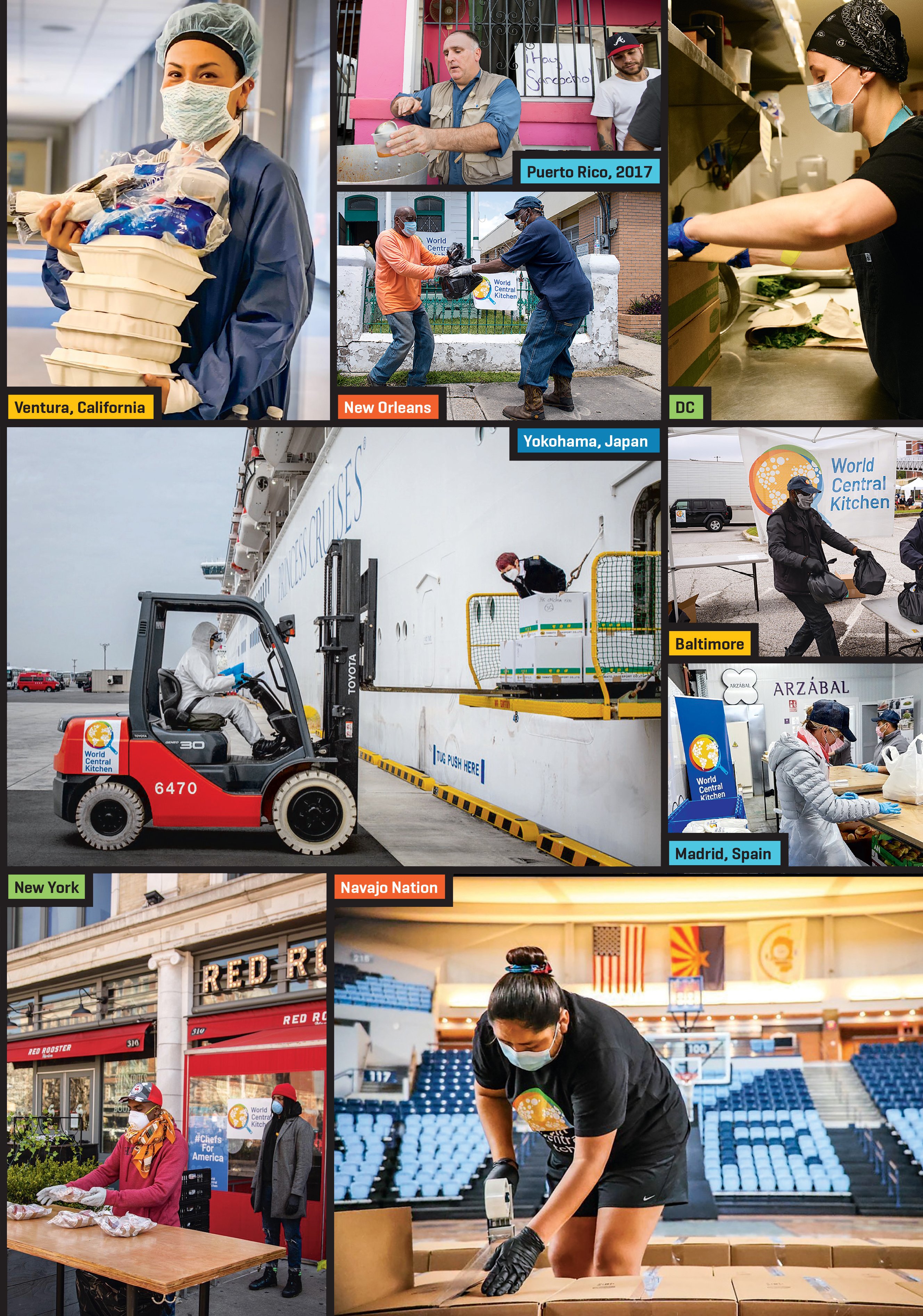
A month later, the team met another cruise ship at a port in Oakland. Then New York City detonated: They sprinted to deliver meals in the boroughs and stood up a traveling farmers market. When the pandemic arrived in Washington, they cooked for two weeks from a kitchen on D Street, Northwest. It took two days to take over the ballpark. “It’s really not that complicated,” Phelps says. “You make a couple calls”—to chefs around town, to volunteers, and, oh, yeah, the Washington Nationals—“you get a memo of understanding, and there you go.” (Greatly aided, no doubt, if your organization is fronted by a celebrity nominated for a Nobel Prize.)
There was another reason World Central could move so quickly: The pandemic presented near-perfect theoretical conditions for its model. Unlike in a typical disaster, the US supply chain was intact. And restaurants desperately needed business. Nationwide, 83 percent of restaurant workers had been laid off. As long as the nonprofit could raise money, it could help send cooks back to their kitchens. Today, 2,200 restaurants are participating in the Restaurants for the People program. Though the outlays are unlikely to cover every eatery’s pre-pandemic balance sheets, World Central estimates it has sent along more than $48 million, accounting for 200,000 meals in Washington alone that restaurants may not have had ordered otherwise.
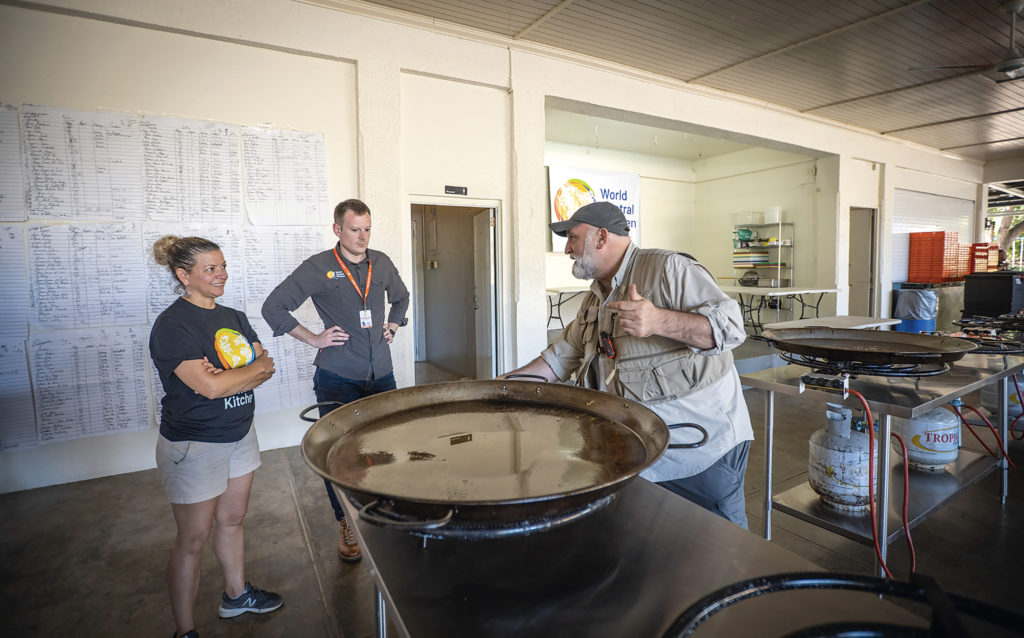
The effort is putting money into others’ pockets as well. Almost immediately, Mook’s team realized that ad hoc networks of delivery drivers wouldn’t scale with demand. The group now partners with Uber Eats, paying drivers to ferry meals to nursing homes and other food-scarce locations. Anna Bornstein, a former EMT who fell in with World Central during Dorian, coordinates the 42 restaurants that have partnered with World Central locally; she estimates she’s sending 220 bulk deliveries out this way each day.
Mook describes the nonprofit in the argot of the West Coast tech class—“moving quickly,” “iterating,” “disruption.” “What we’re building here is a startup in many ways,” he argues. Across the organization, meetings are highly discouraged. Andrés despises them, equating them with weakness. His motto for the group is “Don’t meet. Don’t plan. Just go.” To the extent he has a management theory, he prefers a flat organization, in which collaboration and gut decisions are valued as highly as job titles. (Andrés fondly remembers the time in Puerto Rico when they found a production line being directed by a 12-year-old girl, barking orders like a bond trader at Morgan Stanley.) The org chart of such a place would resemble a ball of yarn—you can almost hear the consultants at McKinsey gritting their teeth.
The primary ingredient, says Andrés, “is the eagerness, willingness, to make something happen where nothing else is happening.” This requires the guts to walk off an airplane, sight unseen—but also to slalom around Guatemalan currency regulations or glad-hand your way through an island whose citizens your country has probably brutally oppressed at one time or another, then charm your way into 20,000 pounds of propane.
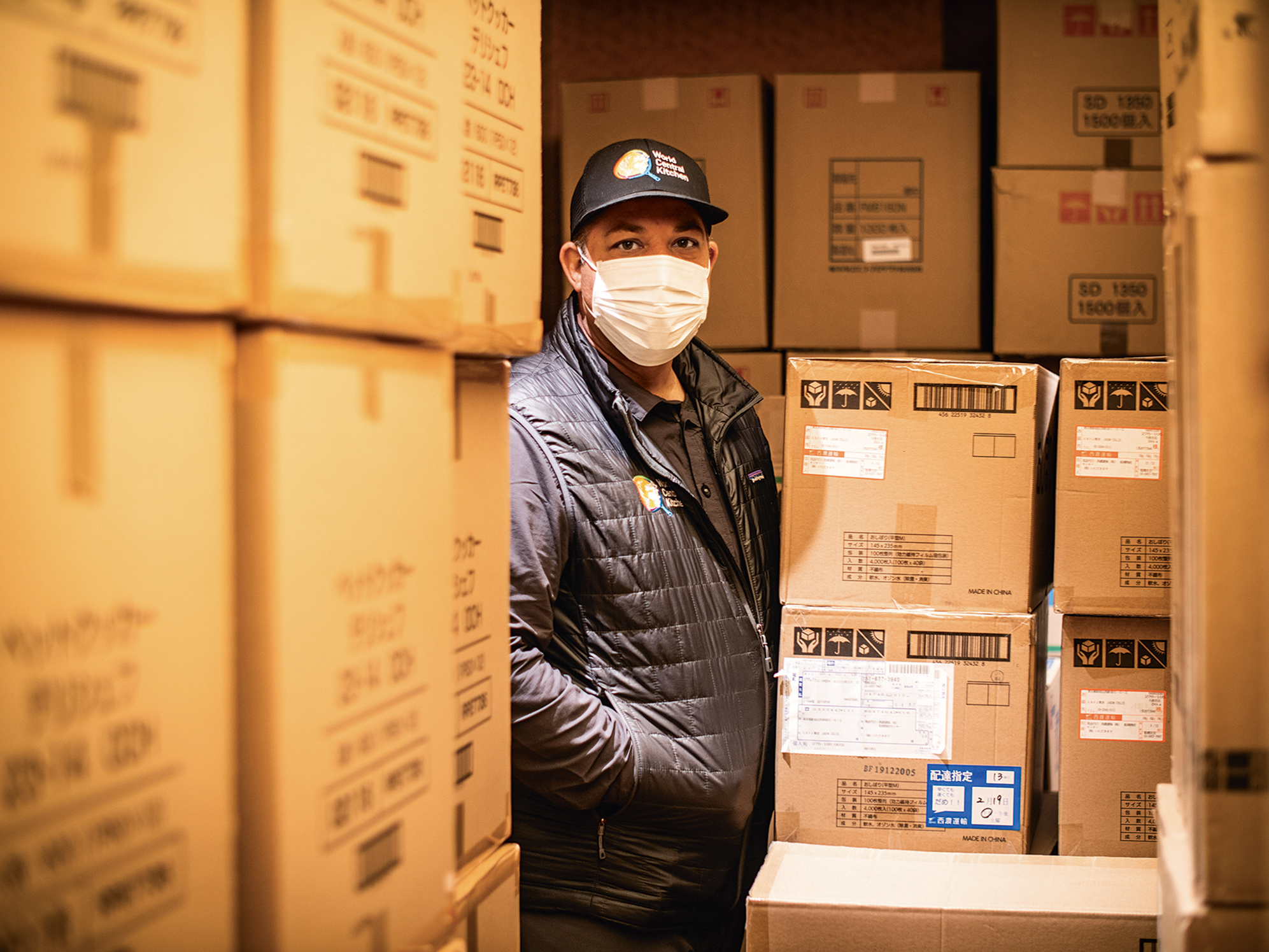
As it happens, restaurant workers have a cache of skills less detectable to the untrained eye. At Nats Park, inventory was being handled by Andy Wooldridge, an out-of-work sommelier. “When you’re managing a fine-wine cellar, like my last restaurant, we had an inventory of around 15,000 bottles and over 600 different SKUs,” he said. “That’s just a lot of moving pieces to keep organized and know where everything is. . . . It carried over pretty easily.”
In typical Andrés fashion, World Central is gunning for bigger game. The goal is to occupy a more permanent national footprint, a mission certain to leverage its highly favored status among the country’s power set. Mook laid out this vision for me during a recent visit to World Central’s headquarters—a WeWork just off U Street. He described collaborations with “Sean” (as in Penn) and “Laurene” (as in Powell Jobs). Lately, Andrés has been speaking a lot with Jeff Bezos.
Mook had just spent the week in New York, Chicago, and the Navajo Nation, where the nonprofit recently deployed. The scale of the devastation weighed on him: In Queens, people started lining up outside the World Central site at 3 in the morning, waiting nine hours until the meals arrived. “What keeps me up at night is: How long can World Central Kitchen keep doing what it’s doing, and what happens when we can’t?” Mook asked. “If we’re their only source of food right now and we stop serving food—like, what happens?” The nonprofit had recently committed $50 million to its restaurant partnerships nationwide, $50 million it doesn’t yet have.
“Folks at FEMA, the Red Cross, the Salvation Army—these organizations. They were laughing José and me out of the room.”
This is where FEMA comes in. World Central’s biggest agenda item right now, aside from the day-to-day pandemic assistance, is helping along a federal bill called the FEED Act. The legislation would allow FEMA to adopt the nonprofit’s model nationwide—and to partner with Andrés’s organization as well as other intermediary groups, steering federal funds their way. The language recently passed the House in Nancy Pelosi’s $3-trillion Heroes Act and is awaiting its fate in Mitch McConnell’s Senate. Andrés has been working the phones, targeting about 40 members of Congress, including senators Lindsey Graham, Mark Warner, and Lamar Alexander, with whom Andrés shares an affinity for the Grainger Tomatoes from Alexander’s home state. “We’re only going to be able to do this for so long before we run out of funds,” Mook says. “We’re showing that the model works. Now what we need is the federal government to come in.”
There are natural questions, though, such as whether the group’s run-like-the-wind esprit can really scale. The problem, Philip Abbott, an emeritus professor at Purdue University’s Department of Agricultural Economics, explained to me, lay in whether other organizations could successfully copy World Central while trying to fulfill FEMA’s new program—a challenge, perhaps, for those that lack a megawatt celebrity. I was reminded of a story that Collis, the procurement chief, had recounted about the Bahamas, as the group raced to beat Hurricane Dorian to the island. At the last moment, an acquaintance of Andrés’s in Miami lent the team his 220-foot boat, affixed with a helipad. How likely was FEMA to stumble on a solution like that?
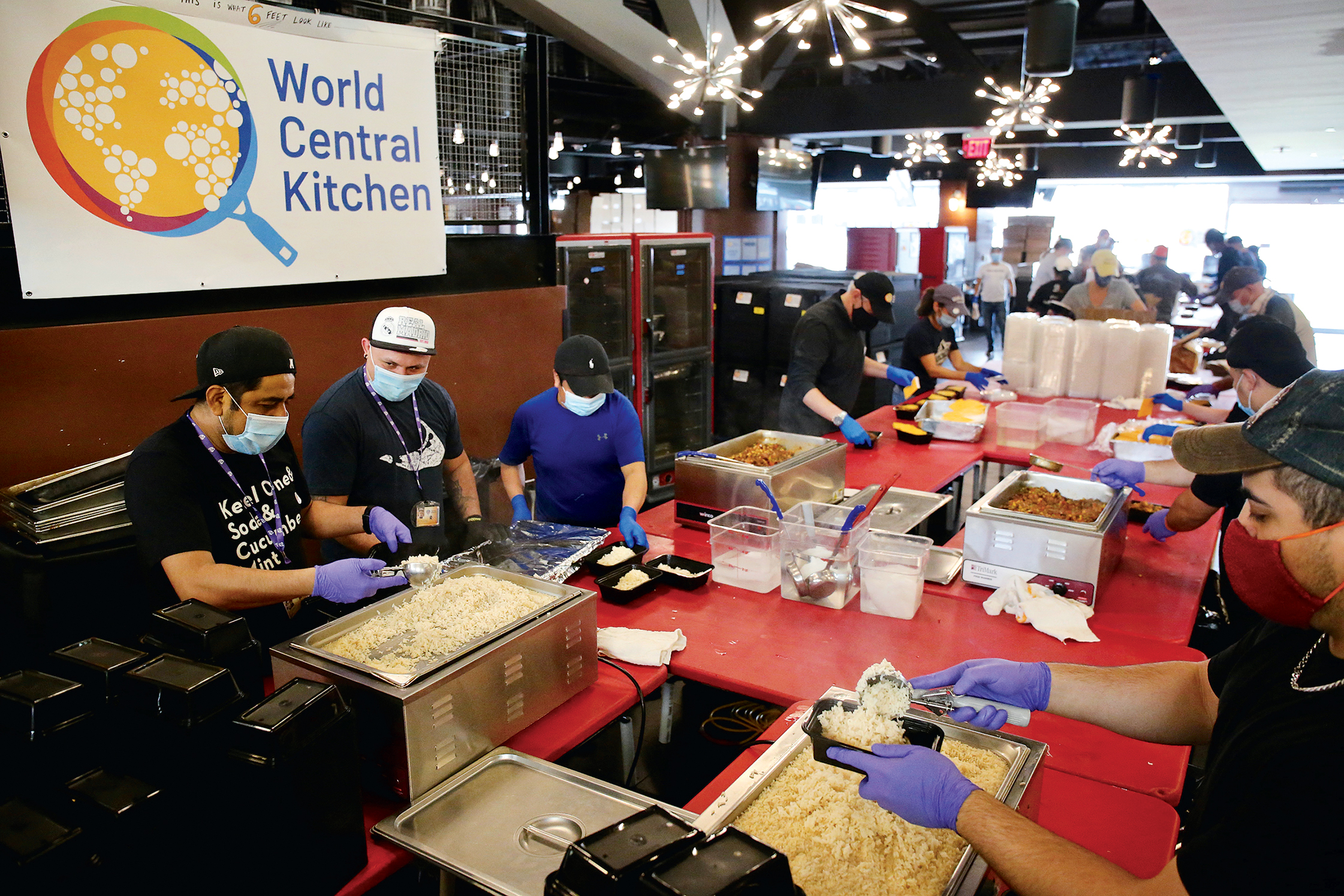
“That’s something that people in the whole food-security business struggle with,” says Abbott. “The challenge is: How can you find a program that doesn’t just address a few villages but addresses big populations?”
Andrés himself is grappling what his organization might look like built out further. Not even three years from its operation in Maria, it’s a lot bigger than it used to be, with 50 or so employees, but still tiny by almost any measure. “How do we make sure we don’t become what we are afraid of right now in other organizations?” he asks. He says he’d like to imagine World Central in 25 years as retaining its core characteristics: “Quicker, faster, with less money [than others] and more efficient.”
For now, as it presses its case with lawmakers, the group is once again starting small. It’s running a pilot program to show how mayors can use FEMA dollars to essentially hire World Central in their cities. The test site is Santa Clara, California, near the heart of Silicon Valley. Mook is hopeful. “I feel like there’s a new generation of nonprofits that are very different from the nonprofits of yesterday,” he says. “And I think World Central is one of them.”
This article appears in the June/July 2020 issue of Washingtonian.
